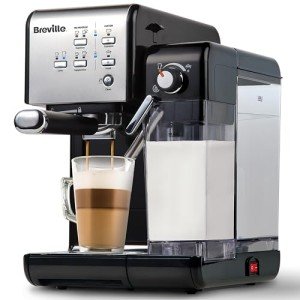7 Simple Tips To Totally Enjoying Your Home Use Espresso Machines
Home Use Espresso Machines: A Comprehensive Guide
Espresso machines have ended up being a staple in lots of households as coffee lovers look for to reproduce café-quality brews in the convenience of their kitchen areas. The rise in appeal has caused a diverse market filled with numerous designs, features, and rates. Home Page aims to provide a useful introduction of home use espresso machines, assisting readers navigate their alternatives successfully.
Understanding Espresso Machines
Espresso machines work by requiring warm water through finely-ground coffee under high pressure, leading to a focused coffee beverage known as espresso. There are several types of espresso machines classified based on their brewing techniques and level of automation. The most typical types consist of:
Manual Espresso Machines: These require the user to control the pressure and water circulation, enabling a more hands-on coffee-making experience.
Semi-Automatic Espresso Machines: These use automatic control over water pressure, while the user by hand grinds and tamps the coffee.
Automatic Espresso Machines: With the push of a button, these machines immediately control the circulation of water, making it easier to brew espresso with consistent results.
Super-Automatic Espresso Machines: These all-in-one machines deal with grinding, tampering, developing, and even milk frothing, making them ideal for users trying to find convenience.
Pill or Pod Machines: These use pre-packaged coffee pods to produce espresso with minimal effort, but they limit option in developing strategies and flavors.
Table: Comparison of Espresso Machine Types
Type
Control Level
Alleviate of Use
Cleaning Level
Suitable For
Manual
User-controlled
Moderate
High
Coffee purists
Semi-Automatic
Partial automation
Moderate
Moderate
Home baristas
Automatic
Completely automated
Easy
Low
Hectic people
Super-Automatic
Totally automated
Very simple
Extremely low
Convenience seekers
Capsule/Pod
Totally automated
Very simple
Really low
Casual drinkers
Key Features to Consider
When picking a home use espresso machine, it's essential to think about various functions that can significantly affect the quality of espresso and user experience.
Pressure: Look for machines that offer a minimum of 9 bars of pressure, as this is considered optimal for developing espresso.
Boiler Systems: Single vs. dual boiler systems figure out temperature level stability and the ability to brew espresso and steam milk concurrently.
Grinder: Integrated grinders permit newly ground coffee, which boosts taste. Think about machines with adjustable grind settings.
Milk Frother: For those who enjoy coffees and lattes, an integrated steam wand or automatic frother is important.
Size and Design: Consider your cooking area space and visual choices. Machines come in numerous sizes, from compact to big setups.
Price: Home espresso machines can range from a few hundred to numerous thousand dollars, so it's essential to establish a budget before exploring choices.
Advantages and disadvantages of Home Use Espresso Machines
Pros
Cons
Convenience of brewing coffee in your home
Preliminary financial investment can be high
Quality of espresso is often exceptional
Requires some skill, specifically with manual machines
Ability to explore flavors
Maintenance and cleaning can be labor-intensive
Can conserve cash in the long run
Not all machines will suit every coffee choice
Upkeep and Cleaning Tips
Preserving an espresso machine is vital for extending its life and making sure constant brew quality. Here are some useful suggestions:
Regular Descaling: Minerals from water can build up in the machine. Descale every 1-3 months, depending upon water solidity.
Daily Cleaning: Rinse portafilters, baskets, and steam wands after each use to prevent coffee oils from constructing residue.
Use Filtered Water: This can help lower mineral buildup and enhance the taste of coffee.
Replace Gaskets and Seals: These elements may break over time and needs to be replaced to preserve pressure and performance.
Check out the Manual: Each machine has particular care directions; following these will make sure longevity.
Frequently Asked Questions About Home Use Espresso Machines
**Q1: What is the best budget espresso machine?The best budget espresso machine frequently depends upon specific needs, but models like the DeLonghi EC155 or the Breville Bambino are popular amongst users for offering terrific worth. Q2: How long do home espresso machines generally last?With appropriate maintenance, home espresso machines can last anywhere from 5 to 15 years, depending on the quality of the machine and frequency of use. Q3: Can I make cappuccinos and lattes with any espresso machine?While most espresso machines can make cappuccinos and lattes, having a reliable
steam wand or frother is essential for accomplishing the ideal milk texture.
Q4: Are super-automatic machines worth the investment?For those who focus on benefit and fast developing, super-automatic machines can be worth the investment, though they might lack some customizability in brew strength and taste. Q5: What kinds of coffee beans are best for espresso?While individual choice contributes, beans labeled as” espresso “blends are generally roasted darker, developing rich tastes and a velvety texture when brewed.
Buying a home espresso machine can transform the day-to-day coffee regimen into something special, raising home brews to café quality. By understanding the various kinds of machines, essential features to consider, upkeep needs, and weighing the
advantages and disadvantages, consumers can make informed choices that suit their specific preferences. As the espresso culture continues to grow, no matter the choice, every brew can be a scrumptious experience waiting to be savored.  **
**